

|
Before or after the congress please see below the possibilities to discover the beautiful, historic, and culture-packed city of Kraków in a coach and on foot. Booking form to be filled is available in the booking form section.
Please note that Pre & Post tours are not included in your registration fee. |
|
.jpg) 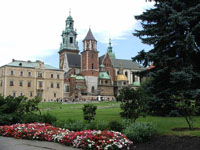 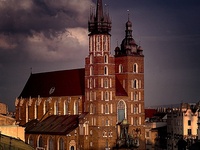 |
Kraków City Sightseeing TourDiscover the beautiful, historic, and culture-packed city of Kraków in a coach and on foot.
Then we will go to the Wawel Hill, over which tower the Royal Palace with its impressive arcaded Renaissance courtyard and the famous Gothic cathedral - the place of coronation and the necropolis of Polish kings. After visiting the Cathedral and the Royal Chambers with a great hall called "Poselska" (The Envoy Hall), whose ceiling with 30 carved human heads and an impressive collection of tapestries woven in Brussels will make you astonished, we will go to the oldest university college - the Collegium Maius, with a beautiful Gothic courtyard, to finish the tour in the heart of Kraków - the Main Market Square - the largest medieval square in Europe with St. Mary's Church - a soaring, Gothic church inside which you can admire the impressive altar by Wit Stwosz (Veit Stoss). Inclusions: tour with a licensed guide, entrance tickets to the Royal Chambers, the Cathedral, and St. Mary's Church, transportation. |
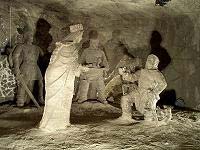  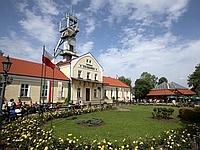 |
Wieliczka Salt Mine – UNESCO World Heritage Site
Prepare to be amazed at the devotion and superstition that drove miners to carve figures, monuments and altarpieces into the walls of an 800-year-old salt mine. Going down the 380 steps into the salt mine you may have the impression of entering a magical underground city, full of mysterious caves, amazing underground lakes, majestic designs and unique salt carvings. The tourist route in the Salt Mine, included on the UNESCO World Heritage List in 1978, is almost 3 km long and consist of winding corridors, 800 steps and a descend to a depth of 135 metres underground. It begins at the Daniłowicz Shaft, where the visitors meet their guide who, while showing them around, will tell them about the history and secrets of the mine, forces of nature that rule the mine, and the ethos of hard work of many generations of miners. Going down deeper and deeper, the visitors will see unusual places, take pleasure in watching the light spectacle on the banks of one of the saline lakes, and learn the famous legend of Princess Kinga, who brought a wealth of salt into the Polish soil. In the middle of the route there is St. Kinga's Chapel, a wonderful chapel dedicated to the patron saint of salt miners, decorated with extraordinary salt artworks. Inclusions: English speaking guide, hotel pick up for selected hotels, admission to Wieliczka Salt Mine, guided walk through Wieliczka Salt Mine, elevator pick up to the ground level on exit.
|
 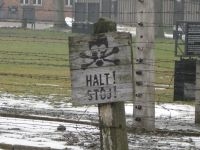 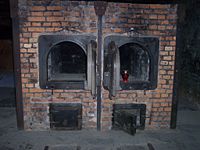 |
Auschwitz-Birkenau – UNESCO World Heritage SiteThe tour of the Museum, included on the UNESCO World Heritage List in 1978, comprises both parts of the former concentration camp - Auschwitz I and Auschwitz II-Birkenau - and a documentary film presenting the first moments after the camp was liberated. The Auschwitz camp has become a symbol of terror, genocide and the Holocaust. It was established by the Nazis in 1940 in the suburbs of the city of Auschwitz, which was integrated into the Third Reich. The direct reason for the establishment of the camp was the growing number of mass arrests of Poles and overcrowding of the existing prisons. Initially, it was supposed to be another concentration camp created by the Nazis from the beginning of the 1930s. That was the function of Auschwitz for the entire period of its existence, even when, from 1942, it became one of the centres for"Endlösung der Judenfrage" ("the final solution of the Jewish issue") at the same time - the Nazi plan to murder the Jews living in the territories occupied by the Third Reich. The Auschwitz camp, until the end of its existence, was first and foremost a place of extermination. Even if from 1943 mortality was reduced in other camps to conserve manpower, in Auschwitz, to which continually new shipments were coming - mostly of Jews - to supply the camp labour, human life never meant too much.Historians estimate that in less than five years of the camp's existence 1-1.5 million people were killed in Auschwitz, most of them - approximately 1-1.35 million - were Jews. The second most numerous group were Poles (approx. 70,000-75,000), the third - Gypsies (approx. 20,000). Approximately 15,000 Soviet prisoners of war and 10,000-15,000 prisoners of other nationalities (including Czechs, Belarusians, Yugoslavs, French, Germans and Austrians) were also killed in the camp. Due to the role that Auschwitz played in the implementation of the Nazi extermination plans, it has become a world-famous symbol of the Nazi genocide, in particular the destruction of the Jews. In the Auschwitz I camp the Nazis established the first camp for men and women; it was the place where the first experiments of killing using Zyklon B took place, the first mass transports of Jews were being murdered, the first criminal experiments on prisoners were conducted, and the majority of executions by shooting were performed. It was there, in block 11, where the central detention camp for prisoners from all parts of the camp was housed, as well as the main camp commandant office and most other SS offices. The camp authorities supervised further expansion of the camp from there.
Inclusions: English speaking guide, hotel pick up for selected hotels, guided walk through Auschwitz-Birkenau concentration camp, headphones, transportation. Exclusions: optional gratuity, food and drink, unless specified. The tour begins/ends: all details in the timetable - please scroll down the page Duration: morning tour - 8:45 a.m. till 2:45 p.m; afternoon tour - 11:30 a.m. till 5:15 p.m.
|
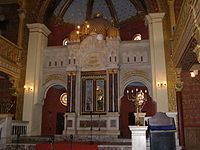 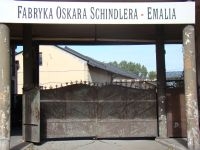 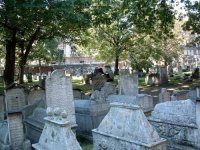 |
The Traces of Jewish CultureVisit the historical centre for Poland's Jews on a tour of Kazimierz, the district where Schindler's List was filmed.For many centuries Jews played their part in creating the history and culture of the city of Kroke, as Kraków is known in Yiddish. Before World War II they made up as much as 25% of the city's population. A tour around Kazimierz - the former Jewish district, preserved in excellent condition until today - will introduce you to the world of their rich culture, customs and history. It was there that the renowned philosopher Mojżesz Isserles (called Remuh) taught, Helena Rubinstein was born, who is considered to have been one of the richest women in the world, and the esteemed director, actor and screenwriter Roman Polanski spent his childhood. The old Jewish district, included on the UNESCO World Heritage List in 1978, became an even more recognisable landmark in Europe following the release of the famous "Schindler's List". Inclusions: English speaking guide, hotel pick up for selected hotels, admission to the Synagogue, the Remuh Cemetery, and Schindler's Factory, transportation. |
 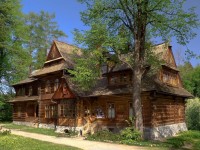 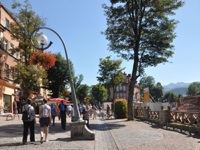 |
|
Zakopane and the Tatra MountainsTravel to Zakopane, a mountain resort nestled at the foot of the Tatra mountains and boasting of breathtaking views of Poland's only alpine peaks.In the 19th century Zakopane was a sleepy village inhabited by the Polish highlanders who - living for years in isolation - created their own unique culture. The special atmosphere and natural beauty of the place was discovered by Tytus Chałubiński. In a short time, artists and creme de la creme of the society declared Zakopane their favourite place in Poland, where they rested, created works of art and had affairs... Currently, the town is visited by thousands of tourists who, desiring to get to know its tradition, often complain about the "cheesiness" of 21st-century Zakopane. That is why we decided to show the face of "the winter capital of Poland" and its surrounding area which still reflects the charm of the past and the beauty of nature.
Inclusions: English speaking guide, hotel pick up for selected hotels, Gubałówka cable car ticket and the Tatra Museum, transportation
The tour begins/ends : all details in the timetable - please scroll down the page Duration 08:45 a.m. till 5:45 p.m. Additional info: We suggest taking something warm and waterproof to wear Price: 235 PLN /person ( approx.59 EUR ) |
   |
Częstochowa – the Black MadonnaVisit Poland's spiritual heart on a tour to the town of Częstochowa. Follow in the footsteps of millions of pilgrims as you gaze upon the "Black Madonna" at the Jasna Góra Monastery.Jasna Góra is one of the most important places of worship of the Virgin Mary and has been the most important pilgrimage centre in Poland for hundreds of years. The miraculous image of the Black Madonna from Jasna Góra is especially worshipped by the faithful of the Roman Catholic Church and the Orthodox Catholic Church. Upon arrival at the sanctuary, we will visit the chapel with the miraculous image of the Black Madonna and the basilica. You can also visit the 600th-Anniversary Museum and the treasury on your own, or participate in a mass. On our way back we will go to Pieskowa Skała to admire the beauty of the picturesque ruins of castles on the so-called Trail of the Eagles' Nests. Inclusions:English speaking guide, entrance tickets,transportation The tour begins/ends : all details in the timetable - please scroll down the page
Duration 08:45 a.m. till 4:45 p.m. Price: 235 PLN /person ( approx.59 EUR ) |
   |
In the Footsteps of John Paul IIOur tour begins with a visit to Wadowice, "the place where it all began" - that is what the Pope said about his hometown in 1999, during his last visit to Poland. We will visit the places Karol Wojtyla held dearest in his childhood and youth, including the parish church where he was baptized, and the house where he was born, which is now a museum. Our trip to and back from Wadowice will also allow you to see the peaks of the Pope's favourite Beskidy Range. After returning to Kraków we will visit the Divine Mercy Sanctuary in Łagiewniki. In this growing centre of pilgrimage you can pay homage to the relics of St. Faustina Kowalska, canonized as the first saint of the Third Millennium by Pope John Paul II, and admire the impressive modern basilica, consecrated by the Pope in 2002. There you can also find the "Have No Fear!" John Paul II Centre - a centre in Kraków dedicated to the life and work of Pope John Paul II. The Centre is to serve the functions of the nation's votive offering for the pontificate of Karol Wojtyla. The Centre's name refers to the memorable words said by the Pope in 1978 during the inauguration of his pontificate: ‘Have no fear! Open wide the doors for Jesus Christ and His saving power.' The lower chapel of the sanctuary was houses a relic of St. John Paul II: an ampoule with blood, placed in the altar top. We will end our journey at the Archbishop's Palace - Karol Wojtyla's last place of residence before he went to the Vatican in 1978. There you can see the famous "papal window", in which John Paul II used to appear to talk and sing with the youth during all his visits, and where thousands of people were praying, holding candles, in his last days. Inclusions: English speaking guide, hotel pick up from selected hotels, entrance ticket to the museum, transportation |
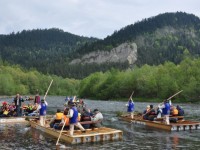  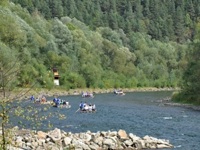 |
Dunajec River Gorge and Niedzica CastleDiscover the most spectacular gorge of Europe – the Dunajec River gorge.This, undoubtedly one of the Poland's prime tourist attractions, gives you a chance to admire some of the most amazing scenery in the Polish highlands. Usually referred to as "the raft trip down the Dunajec river", this is in fact a rather leisurely drift in large wooden punts. Highly experienced guides make sure you have a smooth ride and keep you informed about the sights you see and the history of the trips, which goes back to 1840s . The voyage down the winding Dunajec offers breathtaking views of mighty limestone cliffs plunging into the water as well as stunning native vegetation both protected by the second oldest international national park in the world. Also, while sailing down the river you can spot some rare bird species including the Black Stork. Another attraction of the tour is a visit to Niedzica Castle which was originally built in the 14th century by the Hungarians to protect an important trade through the Dunajec valley. Nowadays the castle towers over a large water reservoir and an impressive dam built in mid 90s. While visiting the castle you can admire the delightful view over the artificial lake and learn an amazing story of Inca refugees that found shelter there. Our trip begins at Niedzica Castle, then continues to the wharf in Sromowce Niżne and ends 15 km later in Szczawnica. The voyage lasts two to three hours, depending on the water level of the river. It is advisable to bring rainwear or a sun hat depending on the weather. |
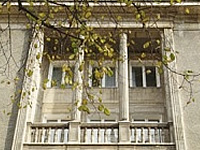  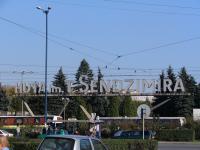 |
Communism Deluxe TourExperience Stalin's gift to Kraków in a genuine Eastern Bloc Trabant automobile.Can you imagine sharing a bathroom with a fish for a week? Or waiting for ten hours in a queue to buy toilet paper? Or just waiting in front of a closed shop for the clock to strike 1:00pm, experiencing a huge hangover, so that you could buy some beer? Probably not... However, we experienced such situations. After World War II, Poland was one of the communist countries, where terror and sadness mingled with humorous and absurd situations. Welcome to Nowa Huta, a communist paradise city that doubled as a fortress prepared to defend citizens against attacks on the Soviet Bloc from the West. It is there where you have a unique opportunity to see modern houses and squares constructed in accordance with plans by Leonardo da Vinci, feel the taste of vodka with herring, admire the size of the Steelworks complex, or visit Lord's Ark Church, a symbol of freedom. During the tour we will tell you about the realities of everyday life in communist Poland, showing at the same time the most important places connected with what was our present until recently, and now belongs to the past. Inclusions: English speaking guide, riding in an old-school Trabant, Centralny Square, residential buildings, Steelworks Administration Centre, Soviet tank, Lord's Ark Church, free drink in the "Stylowa" restaurant.
|